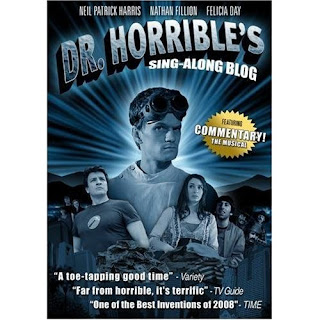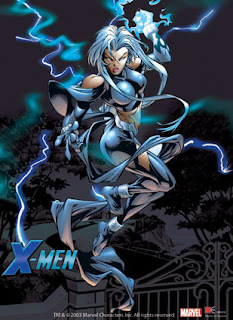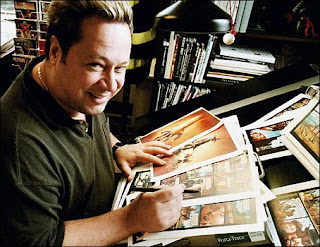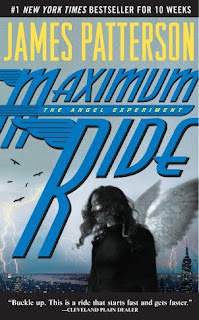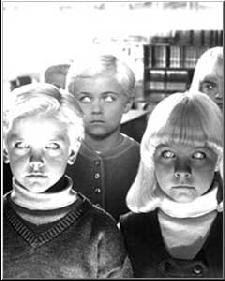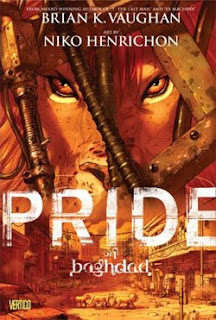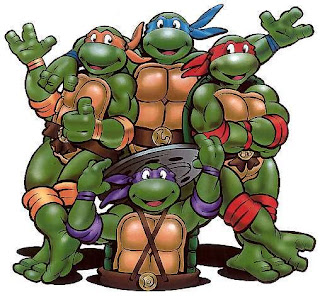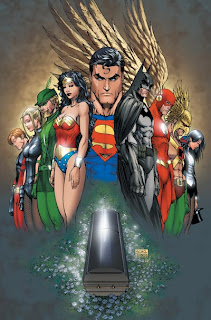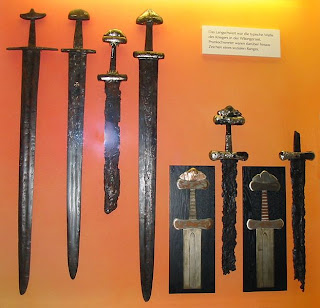
Considered the world's greatest manga by fans, and a festering boil by everyone else,
Naruto is certainly a cause for controversy. Whether it be ninja's that have more in common with wizards than actual shinobi, or the fact that according to some its popularity is completely unwarranted.
As a
One Piece fan myself, I could write a long, impassioned rant about how
One Piece is Japan's most popular manga, rather than
Naruto, and that it's all because of the horrible 4Kids dub that
One Piece does not enjoy the popularity that
Naruto enjoys in the states. But, since it's already painfully obvious what a huge dork I am, I'll spare you that, and instead focus on the purpose of this series of reviews, namely to review the entire
Naruto series, volume by volume.
Why? You ask. Because it gives me content, and I really haven't seen any other review blog that reviews series by volume rather than the entire series as a whole. If I ever get into doing video reviews, there's a good chance that I'll get back to these old reviews and use them as basis for my scripts. Kind of like
Linkara did with his
All-star Batman and Robin reviews.
For starters, I used to be a pretty big
Naruto fan. Right now I'm more of a passive fan, as recent events in the manga have annoyed me, and the anime is a showcase for everything that is wrong with the anime medium. Don't get me wrong, I still love anime, but
Naruto tends to be the one example nay-sayers point to, along with
Dragon Ball Z. And they have good reason. Lousy filler, two years worth of it, and horrible pacing make it an unwatchable series, at least in my humble opinion. Of course, because of the way anime based on popular manga has to make sure that they don't
over take the manga and run out of material, they have to add in filler to extend the series. Unfortunately it's rare that the filler is ever watchable, and so far the only filler worth my while has been
One Piece filler.
 What? I said I was a One Piece fan.
What? I said I was a One Piece fan.Where was I? Oh, right,
Naruto. As I was saying, I used to be a pretty big
Naruto fan. But recently I've lost my enthusiasm for the manga. I still read it, but I don't really care as much anymore. Mostly I just read to see how it will end. Though I've decided it's never really going to end, and could even end up as long as
Hajime no Ippo. I pray this isn't the case, while at the same time hoping other manga I read does last that long. Especially
One Piece, that doesn't even look anywhere close to ending, and
Bleach which just might finish it's second storyline by the time it reaches over eight hundred chapters.
Seeing how Naruto is such a large phenomenon, whether positive or not is up to the individual to decide, I've decided that an analysis of what makes it so popular, volume by volume, is in order. I'll try to remain as objective as possible, but I can't make any promises. At the end of each storyline, regardless of whether the current volume is finished at the time the storyline ends, I will analyze what we've read so far and make a judgment about how the storyline contributed to
Naruto's popularity.
Along with that, I'll break each review into the individual chapters, and by the end of the volume I will decide whether it was effective in making me want to read the next volume.
And with that little introduction out of the way, I present to you,
Naruto - Volume 1.
The volume is broken down into seven chapters, each part of what I've decided is not really a storyline, but more an introduction to the characters and the world they live in.
The first chapter focuses on the titular Naruto, a young ninja in training who has failed the ninja graduation exam twice (as a bit of a plot hole for later, wouldn't that make him two years older than everyone else in his class?). Naruto is an annoying trouble maker, who only acts like the class clown because he wants people to acknowledge him. Or something like that. We also learn that his ultimate goal is to become the Hokage, and have everyone in the village notice his worth. This is a strong driving force for him, until the later half of the series, where his primary motivation changes, but more on that later.
I should also probably mention that the first page of the chapter explains the back story of the series, with the demon fox being imprisoned by the fourth Hokage, and overall it makes for a pretty awesome setting. And what do we get immediately after this? A bratty little kid vandalizing the statues of the men he wants to surpass with graffiti. Is it to late to abandon these reviews?
Also, I apologize if my review sounds
slightly familiar up to this point. However, he brings up some good points. I highly recommend his review, and his other reviews, but what I'm planning goes into a little more detail, which I hope will redeem me from bringing up similar points.
The chapter continues with Naruto being dragged back to class, where he is meant to transform into a copy of his teacher Iruka, but instead performs what he calls the Ninja Centerfold, or Sexy no Jutsu, transforming into a naked, older female version of himself, and into the main source of fanservice for this series. Though really, I'd rather he didn't.
Naruto fails the ninja graduation a third time, but one of the teachers, Mizuki, tells him about a scroll that if he steals it from the Hokage's study and learns one of the techniques from it, Iruka would let him graduate. Of course Mizuki turns out to be a major douche, and it is revealed that he only wanted Naruto to steal the scroll for him. Mizuki also reveals that Naruto is the demon fox that destroyed the village. Later it is revealed that Naruto isn't the fox itself, but instead a container for the fox's spirit.
The chapter ends with Naruto mastering the Shadow Clone technique, making a thousand flesh and blood copies of himself, and beats up Mizuki. And thus the chapter ends with Iruka giving Naruto his headband, and declaring him a graduate.
The first chapter is pretty much self contained, and overall, not that bad a read. Never mind the ridiculous giant shuriken, and the fact that Iruka should probably be going to the hospital after getting stabbed in the back with one of those Shuriken, rather than going to get ramen. Just keep in mind that character's shrugging off fatal wounds is common in manga and anime, and if you want to read or watch it, you're going to have to suspend your disbelief.
Overall I really liked how they set up Shadow Clones as Naruto's weakest technique, but by the end of the chapter, he's made it into his strongest technique. And don't worry, we'll be seeing that technique again. And again. And again...
The second chapter starts with the introduction of a character far more annoying than Naruto. The chapter is essentially filler, as the real meat of the story doesn't start until the third chapter. Granted it introduces Konohamaru, who is something of a recurring character, though unfortunately as the series progresses he won't be used to his full extent, though what we do see of him shows some pretty impressive character growth.
The second chapter really doesn't do much, and overall is just a bridge between the first chapter and the third chapter. It introduces new characters, which is the overall purpose of the next few chapters.
Chapter 3 - Enter Sasuke.
Having already read the whole series, reading that title just makes me sigh. I won't got into a rant about how much I hate Sasuke, but I will still say that as a character, he's bland, and I had to suffer through a years worth of publication featuring only him. Granted he's the main reason I haven't dropped the manga. Simply because if I can suffer through a year of nothing but Sasuke, then I can stand anything Kishimoto throws at me. Though some recent chapters almost proved that wrong.
Besides Sasuke we are introduced to another less than popular character, Sakura. Sakura has been accused of being useless, only ever contributing to one fight, and annoying the crap out of readers with her constant pinning over Sasuke. To be honest, I didn't mind her so much. She isn't that bad a character. Sure she's not the most likable character, she's pretty shallow and selfish, but really, young girls like that do exist. Kind of like irritating class clowns like Naruto exist. Sakura is, frankly, fairly well written, and while she starts off incredibly horrible, just within this single chapter she starts to change. It takes a while, but she slowly ends up loosing the selfish personality. And while her character still gets on a lot of nerves, I just chalked it up to her being an actual human being, not a caricature. Of course, recent actions of hers have frustrated me, but we aren't to that point yet, so I will keep mum on that subject.
Let's just get back to Sasuke quickly, before we move on. While bland as a character, in his introduction he isn't that unbearable. Granted I, and many others, came to hate him, but in this chapter alone, he really isn't that bad. And honestly, I kind of applaud him for the harsh talking to he gives Sakura, who really, really is worse than I remembered.
The ninja's are divided up into three man cells, and I'll admit I got a chuckle out of both Naruto and Sakura's reactions when they realized that the two of them were not only on the same team, but also on the same team as Sasuke. I especially love how Iruka's expression plainly says that even he knows that team is a mistake. This brings up another topic about this series. Humor. While a more action, and somewhat drama, oriented series,
Naruto still manages to pull off some decent humor, which we slowly start to see in this chapter. Granted Kishimoto tries for jokes earlier, but this is the first one that really made me laugh. And it won't be the last.
I also find it amusing, in a slightly vindictive way, that Sakura's single most romantic scene in the entire series was actually with Naruto, who was disguised as Sasuke. I sincerely hope that she eventually finds out about this, because while her violence may be a problem for some, I enjoy seeing the main character beaten up by the female lead.
In chapter 4 we are introduced to Kakashi, a fan favorite character. And it's easy to see why. He is first introduced as an exceptional ninja, and then he falls for a simple trap. He then proceeds to out fight all three of them while reading a book.
Besides chapter four, the last three chapters focus on the final test the team has to undergo. They have to take the two bells Kakashi has on him. Since there are only two bells, the one who doesn't get the bell fails and has to go back to the Academy.
After several impressive action sequences, which include some pretty good laughs, including Sakura fainting twice, the volume ends with Kakashi declaring that none of the three kids will ever be Shinobi, and that sending them back to school would be pointless.
And that's volume 1. Is it bad? Not really. Is it good? It entertained me enough. Does it make me want to read more? Now there's the million dollar question. Overall I could probably skip reading the next volume, especially considering that I've read the whole series before already. But approaching it as a first time reader, I can say that the cliffhanger is fairly effective. By that point I've been entertained by the characters enough that, flaws aside, I kind of want to see what happens next. As such, I'd say that
Naruto can definitely support itself past the first volume. It isn't the greatest manga I've ever read, but at this stage it's good enough. Then there's also the fact that I've already said I'd review this manga all the way through, so I can hardly stop here.
If you liked my review, buy the the manga here:
Naruto - Vol. 1

